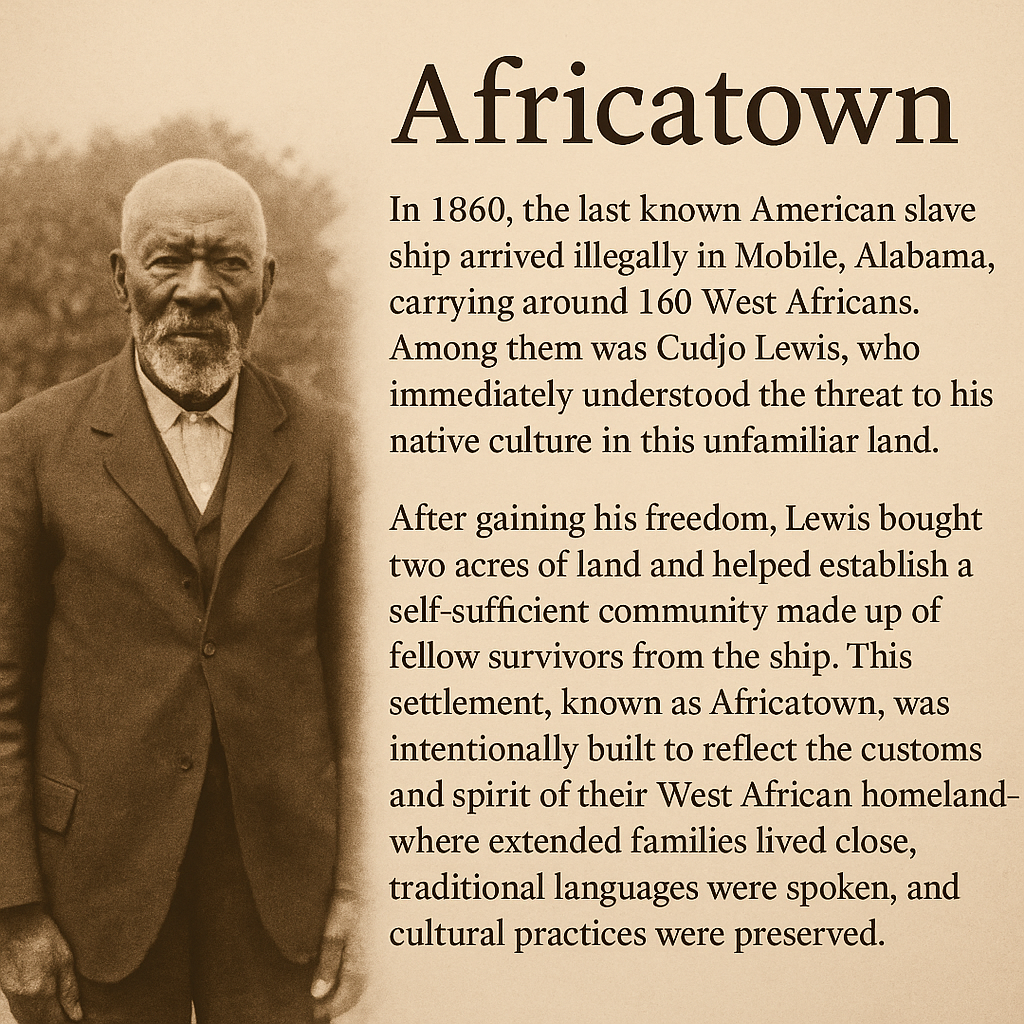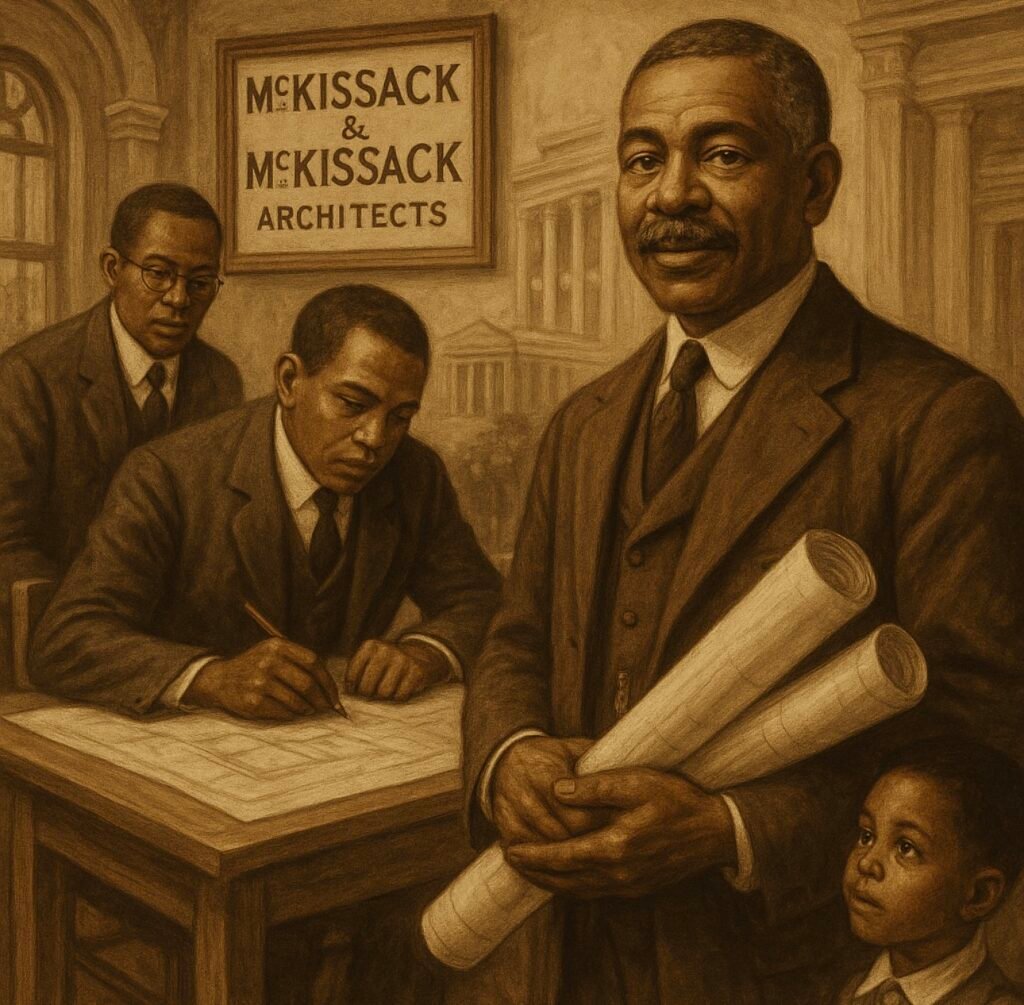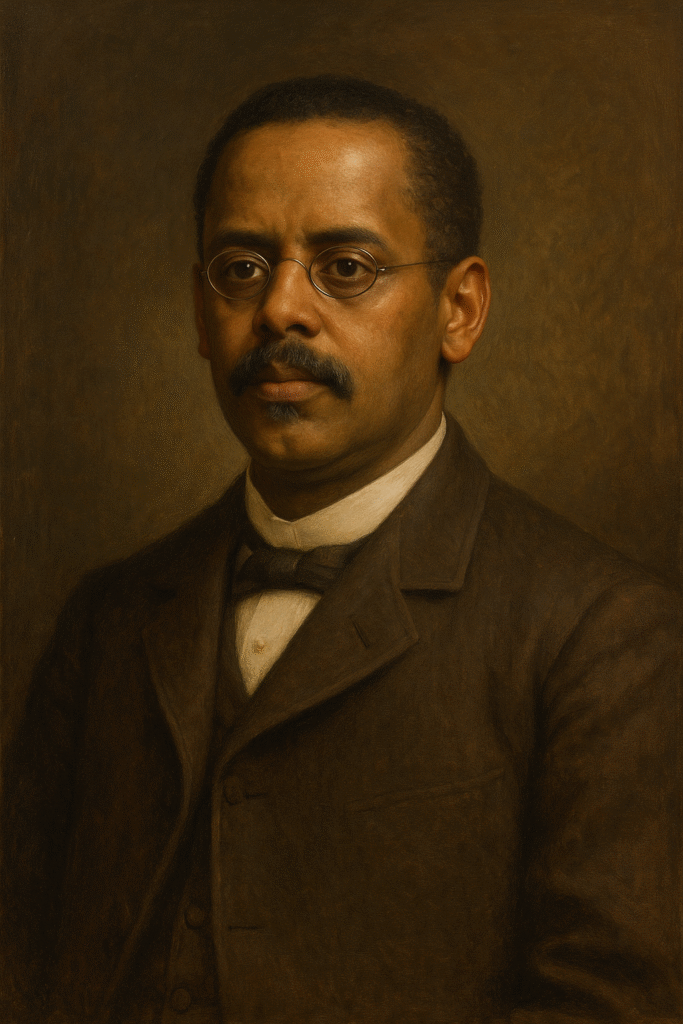Introduction to the Last Slave Ship
In the annals of American history, the arrival of the Clotilda in 1860 signifies a poignant and contentious chapter, as it marks the culmination of the transatlantic slave trade. Captained by William Foster, the Clotilda’s voyage stood in stark contrast to the legal framework established by the United States, which had outlawed the importation of enslaved individuals since 1808. Nevertheless, this ship bravely sailed into the depths of moral and legal defiance, carrying over 100 West Africans to the shores of Mobile, Alabama.
The clandestine manner in which the Clotilda operated exemplifies the desperation and ongoing demand for labor during a period when slavery was already facing increasing scrutiny and resistance within the nation. In a daring attempt to bypass federal laws, Foster engaged in an illegal endeavor that would not only allow him to profit from the disreputable trade but also result in the transportation of these individuals under the most harrowing conditions. These West Africans were subsequently forced into slavery despite the illegality of their journey, symbolizing the persistent injustices surrounding the institution of slavery even as it was nearing its legal end in the United States.
The story of Cudjo Lewis, one of the last survivors from the Clotilda, is inextricably linked to the ship’s legacy. After being brought to America, many of these Africans were eventually able to settle in a community that would come to be known as Africatown, a settlement established in an effort to preserve their cultural heritage amid their new reality. The arrival of the Clotilda not only serves as a stark reminder of the brutal history of slavery but also invites us to explore the rich and complex narrative of those who endured its consequences. This historical context forms the foundation for understanding Cudjo Lewis’s remarkable journey and the lasting impact of the Clotilda’s illicit voyage on American society.
Cudjo Lewis: A Survivor’s Journey
Cudjo Lewis, born in the West African kingdom of Dahomey in 1840, became an emblematic figure in the narrative of the transatlantic slave trade. His journey as a captive began when he was forcibly taken from his homeland aboard the notorious ship, Clotilda, in 1860. As one of the last individuals to be captured for slavery, Lewis’s story not only reflects the brutality of human trafficking but also highlights the complexities of cultural identity amidst extreme adversity.
Upon reaching Alabama, Cudjo Lewis faced significant challenges as he encountered a foreign land filled with a new language and customs. This initial period of adjustment was compounded by the threat to his cultural heritage. Having been raised in a rich cultural context, Lewis was acutely aware of the potential eradication of his traditions and identity. The environment he found himself in was rife with hostility and systemic oppression, which sought to strip him of his past. Despite these overwhelming odds, Lewis exhibited remarkable resilience.
His determination became evident as he sought to maintain connections to his African roots while navigating the harsh realities of enslavement. Cudjo worked tirelessly, using his skills and knowledge to create a semblance of community among fellow captives. This was not merely a survival tactic; it was an assertion of identity in the face of dislocation and despair. Lewis eventually gained his freedom, and in the years that followed, he became a voice for his community, advocating for the establishment of Africatown, a place where former slaves could preserve their heritage.
Ultimately, Cudjo Lewis’s journey exemplifies the enduring human spirit amidst the traumas of exploitation and cultural disintegration. His life serves as a reminder of the resilience necessary to reclaim one’s identity and heritage in a world that seeks to erase it. The legacy of Lewis and Africatown remains a poignant testament to the strength and tenacity of those who survived the darkest chapters of American history.
Gaining Freedom: The Aftermath of Slavery
The story of Cudjo Lewis, a pivotal figure in American history, highlights the complex dynamics surrounding the aftermath of slavery. Following the illegal importation of enslaved Africans aboard the Clotilda in 1860, Lewis’s path to freedom was fraught with both legal and social challenges characteristic of post-Civil War America. Lewis, having survived the harrowing journey across the Atlantic and the horrors of enslavement, was granted his freedom after the Civil War ended in 1865. This transition came at a time when former enslaved individuals were navigating a rapidly transforming social landscape.
In the years directly following emancipation, the legal frameworks established through the Thirteenth Amendment created pathways for liberation. However, these laws were often inadequately enforced, and many former enslaved people encountered hostility and discrimination. Lewis became a symbol of resilience in a society that was grappling with the larger implications of freedom. Upon gaining his freedom, he returned to Alabama, where he and other survivors of the Clotilda founded Africatown, a vibrant community that reflected their cultural heritage and desire for self-determination.
The establishment of Africatown can be viewed as a direct response to the dislocation experienced by formerly enslaved individuals. The community became a sanctuary, fostering a sense of identity and belonging. Interwoven within the struggles for economic autonomy, social justice, and community cohesion, Lewis’s story exemplifies the complexities faced by many African Americans during this era. Social dynamics, including the interactions with the local white population and the establishment of new labor systems, influenced the development of Africatown. Overall, Lewis’s experience underscores the significance of agency in the aftermath of slavery, illustrating how former enslaved individuals laid the groundwork for their future despite the systemic challenges they encountered.
Building Africatown: A Community of Hope
The establishment of Africatown was a pivotal moment in the history of its residents and their quest for autonomy and community after the harrowing experience of slavery. Cudjo Lewis, a prominent figure among the survivors of the last American slave ship, played a critical role in this endeavor by purchasing two acres of land in Mobile, Alabama. This act was not merely the acquisition of property; it symbolized the beginning of a self-sufficient community built on resilience and shared experiences.
Upon acquiring the land, Lewis and his fellow survivors, who were initially brought to America against their will, began to cultivate a sense of purpose and identity through collaboration. The survivors undertook various tasks ranging from agricultural activities to constructing homes, thereby fostering an environment that emphasized unity and self-reliance. This collaborative spirit was fundamental in laying the foundation for Africatown, as individuals pooled their skills and resources to create a sustainable living space.
In the early stages of development, Lewis and the community engaged in farming, which was essential for their daily sustenance and economic independence. They cultivated crops that were integral to their diet and also had the potential to be sold in local markets, allowing them to garner some economic stability. This focus on agriculture helped solidify the community’s self-sufficiency, as each member contributed according to their expertise and experience. The sense of collective responsibility and shared goals significantly contributed to the fortitude of Africatown.
As the community grew, so did the ambition to turn Africatown into a vibrant and thriving settlement. The resilience demonstrated by Cudjo Lewis and his compatriots serves as a testament to the strength found in unity, hope, and the endless pursuit of a dignified life post-slavery. The spirit of collaboration that marked the early days of Africatown continues to resonate, influencing future generations and reinforcing the importance of community in overcoming adversity.
Cultural Preservation in Africatown
Africatown serves as a significant testament to the cultural resilience and perseverance of the descendants of enslaved Africans. Established in the late 19th century by Cudjo Lewis and other survivors of the last slave ship, the Clotilda, this community has become a sanctuary for the preservation of West African customs and traditions. Despite the challenges posed by systemic injustices and cultural erasure, the residents have made concerted efforts to maintain their historical heritage.
One of the most notable aspects of cultural preservation in Africatown is the retention of original West African languages. Although English predominates, various indigenous languages are spoken within the community, serving as a bridge to their ancestral roots. Efforts have been made to teach these languages to younger generations, ensuring that the essence of their heritage is transmitted and celebrated. Language serves not only as a means of communication but also as a vessel for cultural stories, proverbs, and identity.
In addition to language, Africatown has kept alive numerous cultural practices, including traditional music, dance, and culinary arts. Festivals and communal gatherings frequently showcase African-inspired music and dance, reflecting the same joyous spirit that characterized West African celebrations. Traditional dishes, often made from ingredients native to their homelands, play a similar role in nurturing cultural pride; they provide continuity with the past, linking the present generation to their ancestors.
Community leaders in Africatown are also dedicated to documenting the history and experiences of its residents. Various initiatives aim to preserve oral histories, artifacts, and narratives associated with the Clotilda and the formation of Africatown. Through these endeavors, the community strives to create a cultural legacy that honors their past while engaging future generations in the rich traditions that define them. This commitment to cultural preservation not only fosters a sense of belonging but also ensures that the legacy of resilience and survival endures for years to come.
The Structure and Life in Africatown
Africatown, established in the late 19th century, became a unique settlement for the descendants of enslaved Africans from the last American slave ship, the Clotilda. The community was characterized by a cohesive social structure dominated by extended families and a strong sense of governance. This familial network not only provided emotional and financial support but also helped to preserve cultural traditions and values. Within Africatown, members of the community engaged in cooperative ventures, ensuring that resources were shared and everyone was taken care of.
At the heart of Africatown’s social framework were the matriarchs and patriarchs of families, who held significant influence over their relatives and broader community affairs. These leaders facilitated gatherings and discussions about governance, establishing a system that allowed for conflict resolution and collective decision-making. The residents prioritized the creation of an organized community that embodied their cultural heritage while striving for economic self-sufficiency. This aim was achieved through various local enterprises, including agriculture, crafts, and trades, which helped sustain the settlement.
Daily life in Africatown was imbued with a deep sense of identity and tradition. Cultural practices, including storytelling, music, and religious observances, formed the backbone of social interactions, strengthening ties among residents. Schools and churches emerged as central institutions, providing education and spiritual guidance, reinforcing the community’s commitment to heritage and progress. The social dynamics within Africatown fostered resilience and solidarity among its inhabitants, as they navigated the complexities of life in a post-slavery America. This multifaceted structure exemplifies how the African ancestors of Africatown found ways to cultivate their community, preserving their history and fostering a sense of belonging in the face of adversity.
Legacy and Descendants of Africatown
The legacy of Cudjo Lewis, the last survivor of the last American slave ship, resonates profoundly within Africatown, a community founded by former enslaved individuals in Mobile, Alabama. The descendants of Lewis and other African captives have cultivated a rich cultural heritage that honors their ancestors’ resilience and struggles for freedom. This legacy is not only intrinsic to their identity but also serves as a reminder of the historical injustices faced by their forebears.
The community of Africatown has become a vital space for preserving the history and culture of its descendants. Annual celebrations, storytelling events, and commemorative gatherings are organized to pay homage to the lives and sacrifices of those who endured the transatlantic slave trade. These events are infused with African traditions, emphasizing the importance of cultural continuity and community solidarity. In this way, the descendants actively engage with their past, ensuring that the stories of Cudjo Lewis and others are not forgotten.
Moreover, the descendents have taken proactive steps to preserve and promote their history through education and advocacy. Local organizations work tirelessly to document the narratives surrounding the slave trade and the establishment of Africatown, conducting research to unearth forgotten stories and provide a comprehensive view of their heritage. This initiative not only fosters pride among the community but also raises awareness about the broader implications of slavery and its lasting impacts on contemporary society.
In conclusion, the legacy of Cudjo Lewis and the community of Africatown is vital in shaping the identities of their descendants. By honoring their ancestors and fostering a deep connection to their heritage, the community remains a powerful testament to resilience, reflecting the enduring spirit of those who fought for freedom and dignity.
Preserving the History of Africatown
The history of Africatown, anchored by the legacy of Cudjo Lewis, is a poignant reminder of the resilience and cultural heritage of African Americans. Various local initiatives have been launched to preserve this unique history and ensure that the story remains relevant for future generations. Among these efforts is the establishment of community-driven museums that serve as educational resources, detailing the experiences of the last enslaved Africans brought to the United States aboard the Clotilda. These museums highlight not only the traumatic past but also the vibrant culture that has emerged from it.
Moreover, local organizations actively promote cultural events that celebrate Africatown’s roots. These events, including festivals, workshops, and storytelling sessions, foster a sense of pride and community among residents while attracting visitors interested in the rich history of the area. This approach not only preserves the past but also engages a wider audience, providing them with an opportunity to connect with the narrative of Cudjo Lewis and his fellow captives.
The local government has also played a role in conservation efforts by recognizing Africatown as a significant historical site. Collaborations with historical societies and preservation specialists aim to maintain the integrity of the area, ensuring that future generations can appreciate its cultural significance. By investing in historical markers and educational programs, these initiatives promote awareness and understanding of the struggles faced by the descendants of those enslaved individuals.
In addition, technological advancements offer new avenues to promote Africatown’s history. Digital archives and online exhibitions facilitate access to historical documents and narratives, allowing a global audience to engage with the story of Africatown. The combined efforts of both local residents and wider communities exemplify a collective commitment to preserving this important chapter in American history.
Conclusion: Reflection on Resilience and Heritage
The narrative of Cudjo Lewis and Africatown serves as a poignant reminder of the resilience of the human spirit in the face of adversity. The story is not solely about the transgression of slavery but also highlights the enduring strength of a community determined to preserve its identity and cultural heritage against all odds. Lewis, as the last survivor of the Clotilda, embodies the struggle and resilience of not just his life but also the lives of those who endured unimaginable hardships. His contributions to ensuring that the history of the Clotilda and the legacy of those enslaved individuals did not fade into obscurity are invaluable.
Africatown, where Lewis and his fellow captives built a new life, stands as a symbol of survival. It represents the ongoing fight for recognition and the importance of maintaining cultural identity amidst the backdrop of systemic challenges. The community has cultivated a rich tapestry of customs, traditions, and narratives that reflect their African roots, contributing significantly to the broader narrative of American history. Understanding the stories stemming from Africatown offers insight into the complexities of cultural heritage and provides a platform for dialogue about the legacy of slavery in contemporary society.
In examining Cudjo Lewis’s legacy and the significance of Africatown, we are reminded that resilience is a powerful force. It drives individuals and communities to overcome barriers and assert their identity. As discussions about race, history, and cultural recognition continue to evolve, the stories originating from Africatown serve as crucial touchstones for understanding the past and fostering a more inclusive future. The tale of resilience echoed through Cudjo Lewis’s life and Africatown highlights the ongoing importance of cultural heritage in shaping communities and honors those who fought to uphold their identities within the framework of American history.










